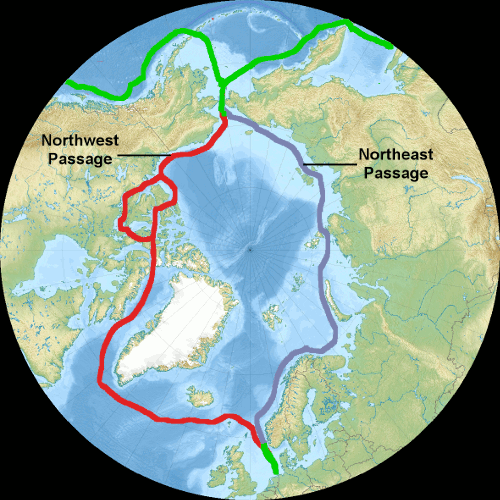
Circle the area on this map

C. Russia said recently that it plans regular naval patrols along its Arctic shipping lanes that opened to commercial vessels only in the last few years. Using the Arctic routes cuts many sea journeys by thousands of miles.
A. Less of the Arctic ice cap melted this summer than in 2012, when the ice retreated to record low levels. But, polar temperatures have risen more than the rest of the world and opened summer shipping lanes that used to be impassable.
B. Testing the viability of shipping Alaska's North Shore oil through the passage, the SS Manhattan was repeatedly trapped by ice. The U.S. turned away from using the Northwest Passage and instead built the Alaskan pipeline.
D. As the ice melts, Canada, Denmark (though Greenland), Norway, Russia and the United States are staking claims on Arctic Ocean territory and the oil that lies below the seabed. The United States Geological Survey has estimated that the Arctic holds 25 percent of the undiscovered oil and natural gas in the world.